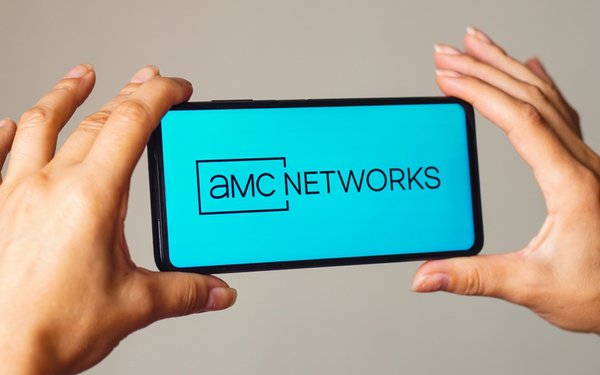In the film Field of Dreams, a voice says to Kevin Costner, “If you build it, he will come.”
AMC Networks, like most other cable programmers, has suffered from cord-cutting, fewer linear viewers, and lower ad income as brands shift their attention to streaming. In response, AMC developed a streaming distribution system to supplement cable, as well as an ad tech infrastructure meant to provide media buyers with the automation, data targeting, and return on investment they seek.
All of this is mixed with AMC’s history of high-quality scripted dramas, which dates back to Mad Men.
“Content is still a very big differentiator for AMC networks,” AMC’s chief revenue officer, Kim Kelleher, told Broadcasting & Cable.
READ MORE: AMC Is Launching Cheaper Ad-Supported Versions Of Shudder, Sundance Now, And More

At its upfront presentation for advertisers, AMC will unveil a slate of upcoming shows and its latest ad-tech wonders, as well as ad-supported versions of more of its subscription streaming services and an announcement that its Content Room branded content unit will ramp up production of shows advertisers can sponsor.
AMC reduced programming spending in 2023. Kelleher predicted that this year’s production will be comparable to last year’s. The business will inform prospective purchasers about how it is expanding its zombie, vampire, and witch universes while also introducing new series such as Nautilus, a unique take on Captain Nemo.

At the same time, AMC must reverse its declining ad sales. In 2023, AMC’s domestic ad sales plummeted 20% to $634 million.
“We’ve stayed so committed to the long-form, premium dramas while so many others I feel are short-cutting on at this, leaning much more heavily into quick production and reality,” she went on to say. “Buyers still can access the premium programming and shows that we deliver and take advantage of the data-targeting capabilities that we have.”
READ MORE: AMC+ Has Settled A Class Action Lawsuit For $8.3 Million. Find Out If You Have A Claim Here
That programming is now available to viewers via 30 distinct endpoints, boosting total viewing to new heights.
“When we combined all of the endpoints into Audience Plus [AMC’s advanced insights and data-targeting platform], we were able to transact across them all, and we discovered that we had reached 91 million homes,” said Evan Adlman, executive VP, commercial sales and revenue operations at AMC Networks. “With our extensive repertoire, we receive an average of 480 million hours of watching per month.

“When you combine that together with the data-targeting capabilities that we have, you really can narrow in on an audience within the very large-scale reach that we have,” he went on to say.
According to Adlman, around 72% of AMC’s national linear footprint is addressable, with 40% of that footprint capable of being brought in programmatically.
“We hope what everyone in the audience hears on Wednesday is that we heard you,” Adlman said in a statement. “For years, you’ve said, ‘If you build it, we will come.'” And I truly believe that we have reached a place where we are asking advertising and marketers to fully leverage what we have produced.”
Unfortunately, programmers’ capacity to commercialize content on nonlinear channels has lagged behind the change in viewership to those platforms.
“Are we moving as fast as we want? “No, never,” Adlman replied. “But we at AMC Networks are slowly and steadily shifting the monetization into those new distribution endpoints.”
READ MORE: AMC Networks Reports A $21.8 Million Q4 Loss
A lack of established measurement tools has prevented some marketers from making the cross-platform partnerships that AMC is looking for, but Adlman pointed out that marketers that are still deciding between platforms are missing out on a large portion of their audience.
“Meanwhile, the buyers that are buying strategic audiences are fully comfortable with the way we deliver measurement and verification,” he went on to say. “We just need to get more people in the industry to come to that table [and take advantage of those capabilities.”
More Interactive Upfront
AMC has planned this year’s upfront, which will take place on Wednesday (April 10), to be more interactive. The corporation is putting the same effort into its presentation to media buyers as it does for consumers at Comic-Con.
“It’s still a very intimate event,” Kelleher explained. “We still have talent interspersed around the room.” Chief marketing officer Kim Granito’s team “created these really great immersive moments that will bring the shows to life for buyers who haven’t seen them yet,” she explained.
Even in an age when programmatic machines are making an increasing percentage of purchasing choices, it’s critical to familiarize clients and agency executives with the material AMC creates.

“Our most important products are our shows,” Kelleher explained. “That’s what brings the viewers that people want to buy.”
As the market evolves, Kelleher believes marketers will continue to want flexibility, variety, and new methods to transact.
“We’ve really tried to adapt our business in real time, no matter what the market does,” she told me.
“We need volume,” Kelleher explained. “I’m really optimistic that the economy is improving. I’m absolutely confident that will boost their spending.”
However “the notion of having to put your dollars into the upfront to guarantee that inventory, to guarantee that pricing upwards of 18 months out, that’s not for everyone anymore,” she went on to say.
“Obviously we appreciate the upfront and we super-serve the advertisers that participate, but we’re open 365 days a year,” Kelleher went on to say. “We’ll meet our partners whenever they need to be.”
Radiant TV, offering to elevate your entertainment game! Movies, TV series, exclusive interviews, music, and more—download now on various devices, including iPhones, Androids, smart TVs, Apple TV, Fire Stick, and more.


